This dinner roll recipe took Chef Rachel Farnsworth over 5 years of testing to develop. It has since been enjoyed by millions of people around the world with thousands and thousands of rave reviews, heralded as the best dinner rolls on the internet. In addition to being published in her best-selling cookbook The Stay At Home Chef Family Favorites, this dinner roll recipe is used in restaurants and bakeries around the world. And now, it’s all yours!
Why Our Recipe
- Tried and true recipe for soft, fluffy, buttery dinner rolls worthy of a bakery every time.
- This recipe works for any skill level. Use a stand mixer or knead by hand.
- Make ahead instructions and freezer instructions included!
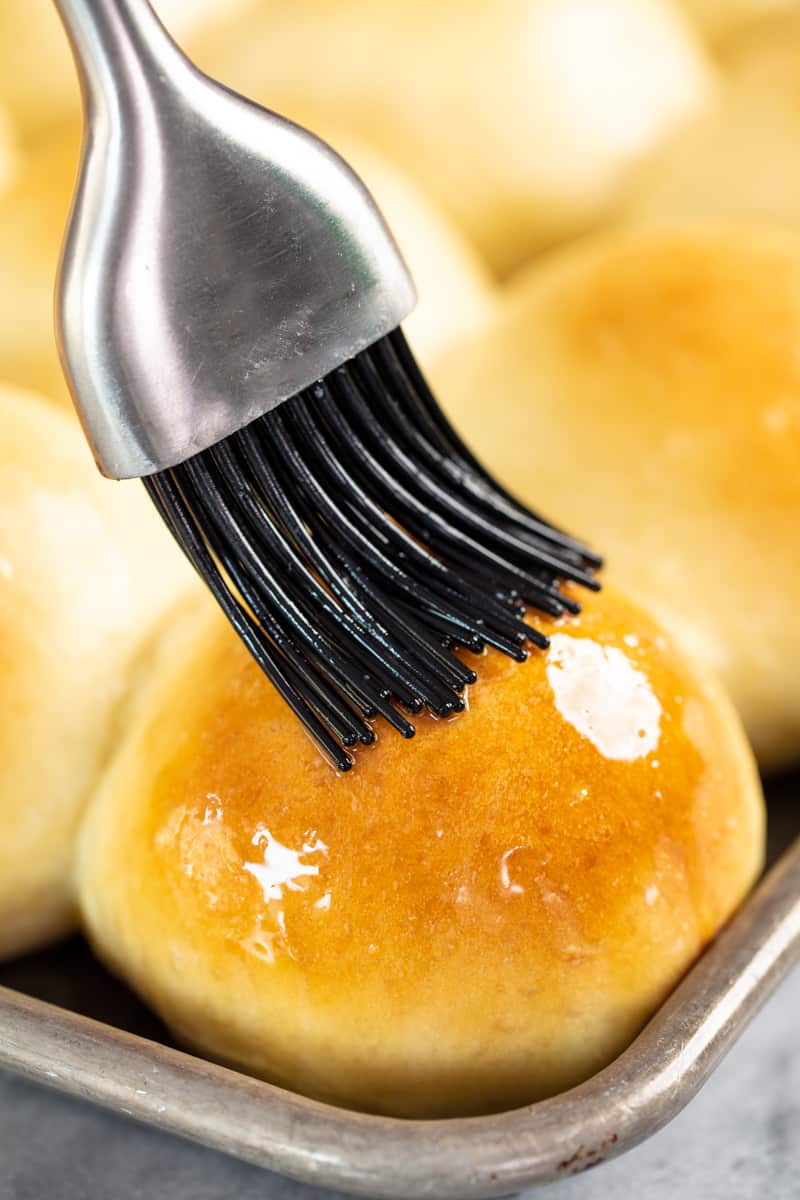
Whether you are new to bread making or an experienced baker, this recipe is sure to please. These homemade dinner rolls deliver bakery-quality results every single time. Whether you’re a seasoned baker or a beginner, this recipe has you covered. Use a stand mixer for convenience or knead the dough by hand if you prefer a more hands-on approach. You’ll get pillowy soft melt-in-your-mouth perfection either way!
Ingredient Notes
- Warm Milk: Make sure the milk is between 100°F to 110°F. Heat it on the stove or in the microwave. Use a thermometer for accuracy or test with your finger—it should feel warm but not hot. Use whole milk, 2% or 1% for best results. Skim and dairy milk alternatives can also work.
- Instant Dry Yeast: Instant yeast doesn’t need to be activated beforehand. If you only have active dry yeast, adjust the rising times slightly as noted in the instructions.
- Granulated Sugar: Yup, just regular old sugar. Brown sugar can also be used if you want to add in that hint of molasses.
- Salt: Stick with standard table salt for accurate measurements.
- Salted Butter: Make sure you use softened butter so it mixes in to the dough. If you only have unsalted butter, add an extra pinch of salt.
- Eggs: Grade AA large eggs will do.
- All-Purpose Flour: Start with 5 1/2 cups and gradually add more as needed. Bread flour can be used in the same amount for a slightly chewier texture, using the same amount.
- Melted Butter: Brushed on after baking for a shiny finish and buttery flavor.
No stand mixer? No Problem!
You can knead your dough by hand! Start out by stirring with a spoon until it becomes too difficult to stir. Turn the dough out onto a clean surface and knead it with your hands, gradually adding in more flour and folding, pressing, and working the dough (kneading) until you have a soft and smooth dough ball that is tacky, but not sticky enough to stick to your hands.
Active Dry Yeast Vs Instant
Instant dry yeast can be added straight to dry ingredients and doesn’t require any waiting period or proofing. It also rises a bit quicker. Active dry yeast is a bigger size of granule and generally needs to be dissolved in a liquid before adding to a recipe. It activates a bit slower so expect 10-15 minutes extra in rising time.
Go by Feel
The exact amount of flour you add in bread making can vary a great deal so it’s important to go by feel. I like to say you can feel a soft roll just by touching the dough. The dough should be smooth and slightly tacky, but still very soft and pliable. If it is sticking to your hands or the sides of the bowl, you need more flour. If you add too much flour and the dough stiffens, your rolls will also get a little stiff so always add additional flour a small amount at a time.
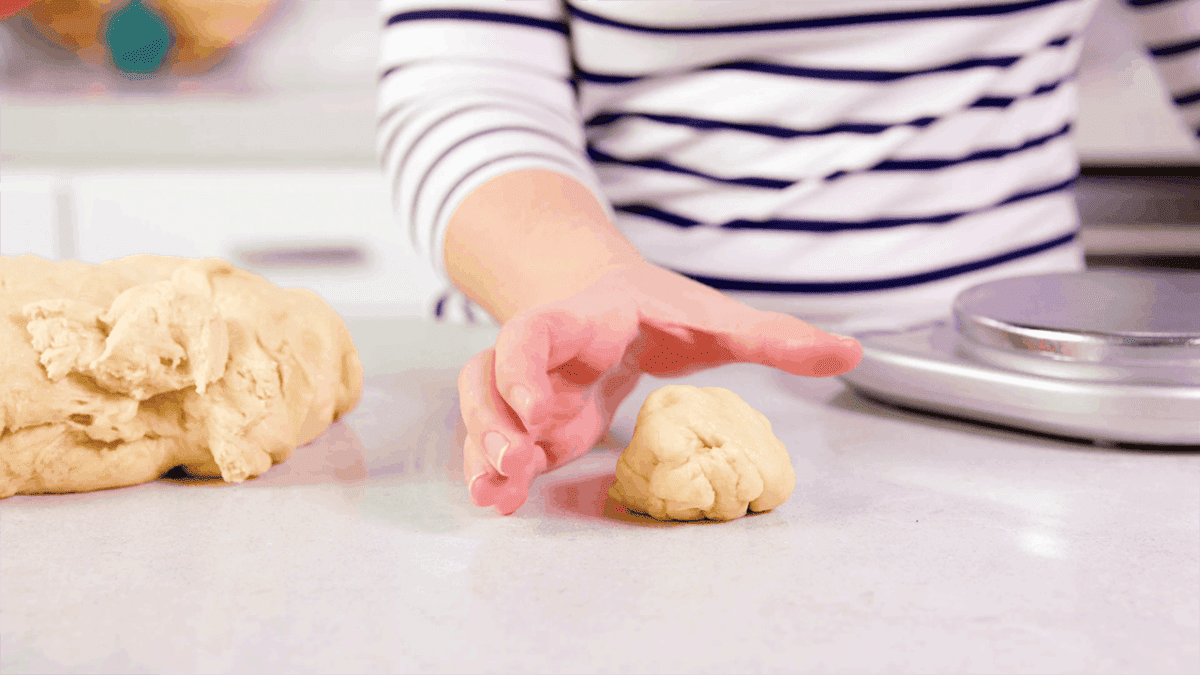
Pro Tip: Equal Size Rolls
The best way to ensure that your rolls are equal in size is to weigh them. Weigh the entire batch of dough using a kitchen scale and divide that weight by 24. This will give you your target weight for each roll. Usually, this is somewhere around 2.5 ounces.
Shaping Rolls
Once you have your dough divided into 24 pieces you can shape your rolls. Place your hand into a cupping shape parallel to a clean countertop. Place the dough ball between the palm of your hand and the countertop. Roll the dough in a circular motion between your palm and the countertop for approximately 30 to 45 seconds until you have a smooth, round ball.
Measuring Flour
The flour you buy at the store these days is generally pre-sifted. There is no need to sift your flour. I prefer the scoop and sweep method as it is ultra-convenient. Simply give your flour a fluff, use your measuring cup to scoop out the flour, and level off the top. Weighing your flour using a kitchen scale is the only way to ensure complete accuracy. Even then, bread making is both fickle and forgiving and the actual amount of flour you add can change just due to the humidity in the air. When making this roll recipe, it is best to go by the touch and feel of the dough. 1 cup of flour is approximately 125 grams.
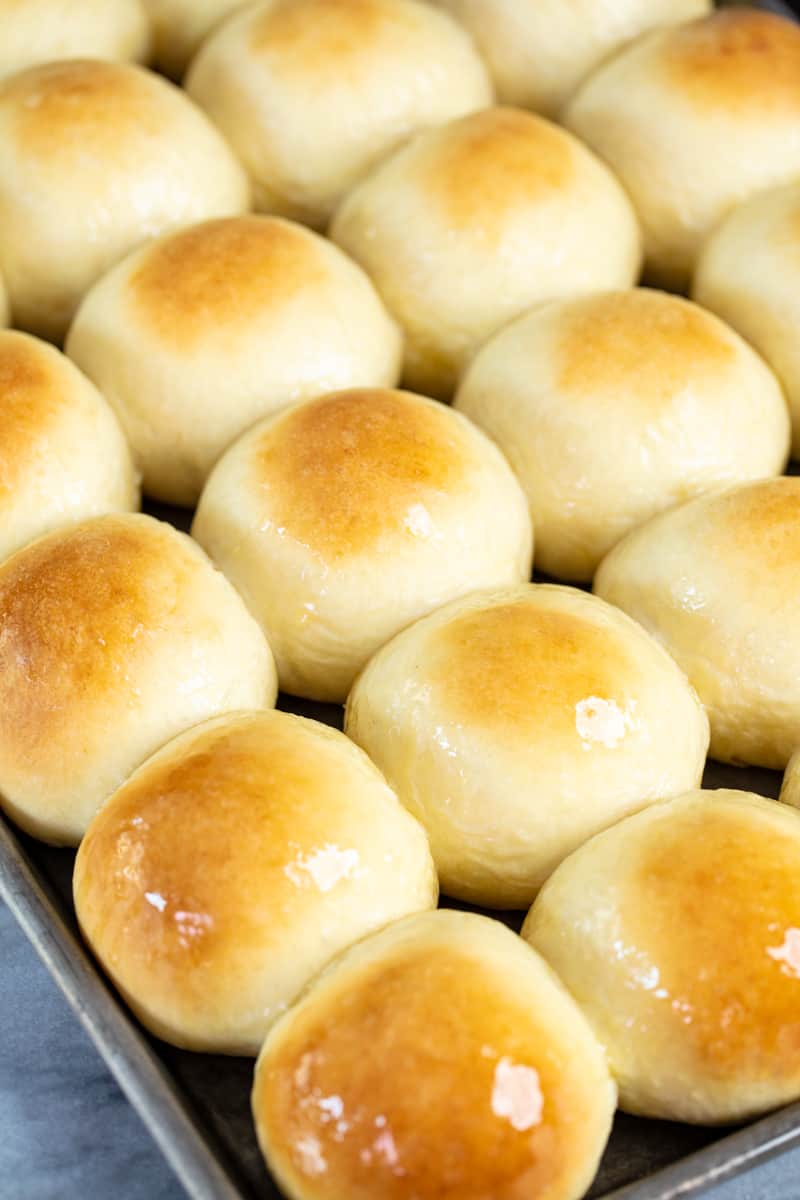
Freezer Instructions
You can freeze dinner rolls for later baking immediately after you shape them into rolls. When ready to eat, remove them from the freezer and allow to thaw and produce their second rise until double in size before baking. This can take anywhere between 1 to 2 hours, depending on the temperature in your home.
Make-Ahead Instructions
Need to make your dough ahead of time while you are busy doing other things? Make your dough as directed and let it rise for the initial 90 minutes. Shape the dough into rolls and place them on your baking sheet. Instead of letting them rise for an additional 60 minutes, cover the shaped rolls with plastic wrap and place the pan directly into the refrigerator. While it doesn’t stop it completely, the cool temperature of the fridge will slow the growth of your yeast. Your rolls will only rise slightly while refrigerated and you can hold them this way for up to 24 hours.
When ready to bake, remove them from the fridge and allow the rolls to rise at room temperature while your oven preheats, about 30 minutes. Continue to bake as directed.
Storage Instructions
Store in a plastic bag or airtight container at room temperature for up to 72 hours.
More perfect bread recipes…
Best Homemade Cinnamon Rolls Ever
2 hrs 14 mins
Ultimate Guide to Homemade Bread
3 hrs 25 mins
Homemade Breadsticks
1 hr 18 mins
Watch the video below where Rachel will walk you through every step of this recipe. Sometimes it helps to have a visual, and we’ve always got you covered with our cooking show. You can find the complete collection of recipes on YouTube, our Facebook Page, or right here on our website with their corresponding recipes.

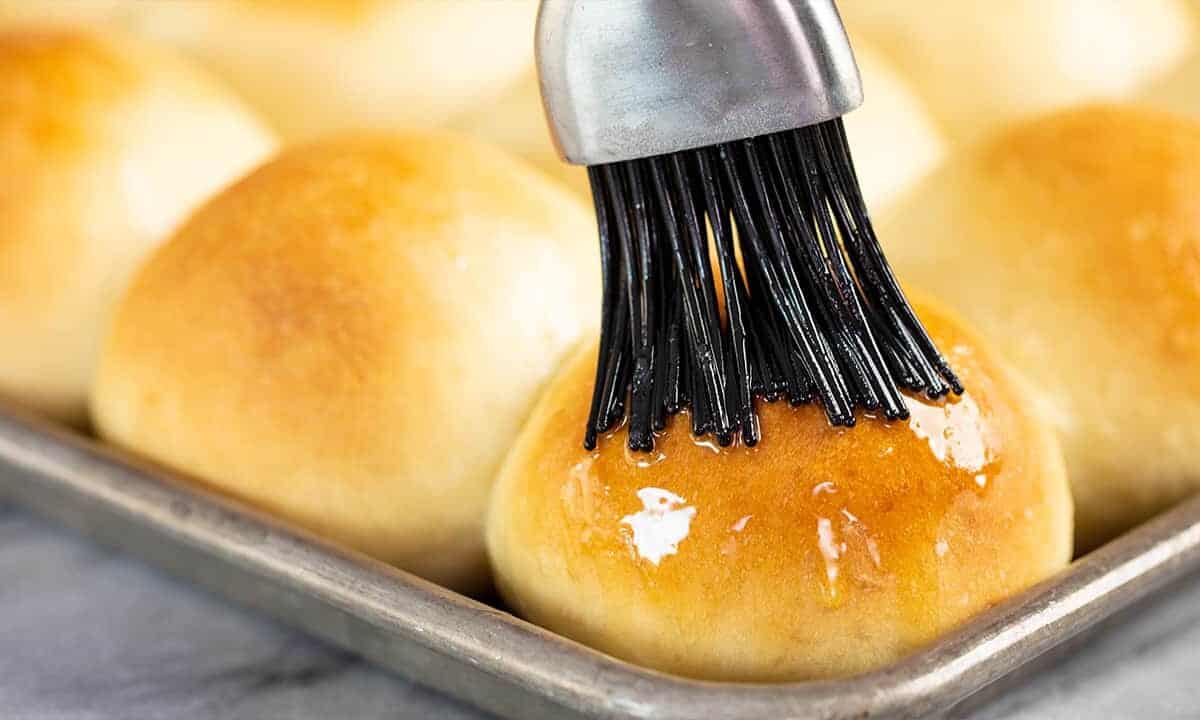

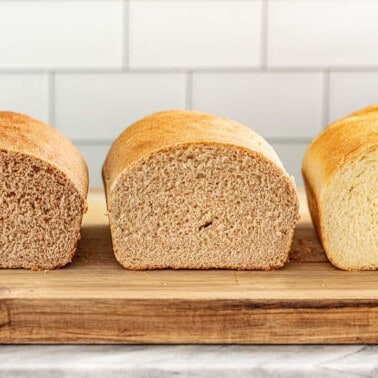

I want to make these rolls to bring to my mom’s for Thanksgiving, can I cook them half way and then finish them at my moms?
I wouldn’t recommend that. Just bake them before.
Two questions for you – can you shape these into different shapes? Like crescents or a clover style?
Also, do you have any opinions on covering to rise?
Thank you , so excited about these.
Yes, you can shape them into whatever shape you’d like.
I always cover to rise.
Do you have any modifications for baking at at 5,000 feet?
Thanks
Jodi
I bake at 4500 feet.
Hi! I want to serve this at brunch so leave them ready the night before and serve them just taken from the oven. How should I do that? Should I leave the dough growing for the 2nd time all night?
Thank you!
It’s difficult to rise in the fridge because it really depends on a variety of factors. It’s definitely an option though and people have reported good results with it.
Can this recipe be cut by half for a smaller batch?
Yes.
Why don’t I have to “proof” the yeast? Still new at bread so verifying before I try this. Instant doesn’t require proofing or any time at all?
Instant yeast doesn’t require proofing. It’s amazing!
After reading comments,see that the dough can be made in a bread machine. Do I need to use bread machine yeast instead of the instant dry yeast? Will make the dough in the machine & proof my usual way.Proof by filling a glass measuring cup with boiling water. Placing measuring cup & rolls in microwave and closing door & leaving door closed for an hour, Steam from boiling water creates perfect atmosphere for dough to rise. NOTE: Microwave is NOT TURNED ON.
Still use regular yeast. You can let it rise that way, which will significantly speed up the rising time. I just do it the old fashioned way and let it sit on the counter all boring like 🙂
Hi Rachel,
I only have 1 oven and planning on making this again this year. I failed last year because of the one oven problem. In trying to avoid same scenario, I wanted to hear your opinion on what I plan to do this Thanksgiving.
I would follow all the instructions and when I get to the part on forming the dough into balls and waiting for it to raise. I was wondering if I would wait for the balls to rise in the fridge for around 3-4 days like how I let my pizza dough rise. This means I would have to make the dough tomorrow or Tuesday.
Thank you for all that you do for us newbie chefs who are trying oh so hard. =)
If you are going to let them rise in the fridge then 3-4 days is far too long. Let them rise half way and refrigerate for a few hours until ready to eat. Rising in the fridge depends on a variety of factors, but people have reported good results.
excuse me , 375 F o 375 C ??
Can I make this vegan, how much egg substitute & is it okay to use the same amount of almond milk as a substitute for the milk.
If you google “egg substitute baking” there are lots of options to choose from.